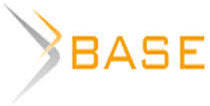Когнитивное вовлечение в научной письменной речи: эмпирические данные о вариативности восприятия научных данных
В исследовании рассматривается влияние активного и пассивного залога на понимание научных статей читателями с различным уровнем владения языком. Работа устраняет существующий пробел в знаниях о том, как языковой стиль может влиять на интерпретацию научных данных. Методология включала предварительный опрос, задание на понимание прочитанного (вопросы с множественным выбором, открытые и краткие вопросы на воспроизведение информации), а также итоговый опрос. В исследовании приняли участие 50 человек, которые были равномерно распределены между двумя группами: респонденты первой группы читали тексты в активном залоге (AV), второй – в пассивном залоге (PV). Анализ проводился с использованием описательных статистических данных и охватывал такие параметры, как фактическое понимание текста, субъективное восприятие понятности, удовлетворённость чтением, восприятие достоверности представленного материала и предпочтения в отношении стиля изложения. Согласно результатам исследования, участники группы AV продемонстрировали более высокое общее понимание прочитанного, особенно в части вопросов, требующих краткого воспроизведения информации, где их баллы были значительно выше. Также они отметили более высокое субъективное понимание текста и большее удовлетворение от чтения. В то же время участники группы PV сочли содержание статьи более достоверным. На основе полученных данных авторы формулируют три ключевые рекомендации: использовать активный залог для повышения понимания сложных описаний; применять активный залог для лучшего запоминания конкретной информации, основанной на фактических данных; использовать пассивный залог для повышения субъективной достоверности. Исследование ограничено небольшим объемом выборки и использованием только одной статьи для каждой группы участников, что может повлиять на степень применимости полученных результатов к другим текстам. Результаты исследования представляют интерес для исследователей, редакторов и научного сообщества в целом, подчёркивая важность баланса между использованием активного и пассивного залога в научных текстах для обеспечения их понятности и доступности.
Гришечко Е. Г., Томалин Б. Когнитивное вовлечение в научной письменной речи: эмпирические данные о вариативности восприятия научных данных // Научный результат. Вопросы теоретической и прикладной лингвистики. 2025. Т. 11. № 2. C. 54–79.


















Пока никто не оставил комментариев к этой публикации.
Вы можете быть первым.
Akopova A. S. English for Specific Purposes: tailoring English language instruction for history majors // Training, Language and Culture. 2023. Vol. 7(3). Pp. 31–40. https://dx.doi.org/10.22363/2521-442X-2023-7-3-31-40
Bailey S. Academic writing: a handbook for international students. London: Routledge, 2025. 320 p. https://doi.org/10.4324/9781003509264
Bailin A., Grafstein A. The linguistic assumptions underlying readability formulae: Aa critique // Language & Communication. 2001. Vol. 21(3). Pp. 285–301. https://dx.doi.org/10.1016/S0271-5309(01)00005-2
Balashov E., Pasichnyk I., Kalamazh R. (2021). Metacognitive awareness and academic self-regulation of HEI students // International Journal of Cognitive Research in Science, Engineering and Education (IJCRSEE). Vol. 9(2). Pp. 161–172. https://doi.org/10.23947/2334-8496-2021-9-2-161-172
Bonsall S. B., Leone A. J., Miller B. P., Rennekamp K. A plain English measure of financial reporting readability // Journal of Accounting and Economics. 2017. Vol. 63(2-3). Pp. 329–357. https://dx.doi.org/10.1016/j.jacceco.2017.03.002
Brown R. B. Doing your dissertation in business and management: the reality of researching and writing. London: SAGE Publications, 2006. 121 p.
Brysbaert M. How many words do we read per minute? A review and meta-analysis of reading rate // Journal of Memory and Language. 2019. Vol. 109. P. 104047. https://dx.doi.org/10.1016/j.jml.2019.104047
Cheung Y. L., Lau L. Authorial voice in academic writing // Ibérica. 2020. Vol. 39. Pp. 215–242. https://dx.doi.org/10.17398/2340-2784.39.215
Chi M. T., Wylie R. The ICAP framework: linking cognitive engagement to active learning outcomes // Educational Psychologist. 2014. Vol. 49. Pp. 219-243. http://dx.doi.org/10.1080/00461520.2014.965823
Ding D. D. The passive voice and social values in science // Journal of Technical Writing and Communication. 2002. Vol. 32(2). Pp. 137–154. https://dx.doi.org/10.2190/EFMR-BJF3-CE41-84KK
Dunleavy P. Authoring a PhD: How to plan, draft, write and finish a doctoral thesis or dissertation. London: Palgrave, 2003. 297 p.
Erdemir F. How to write a materials and methods section of a scientific article? // Turkish Journal of Urology. 2013. Vol. 39(Suppl 1). Pp. 10–15. https://dx.doi.org/10.5152/tud.2013.047
Ferreira F. In defense of the passive voice // American Psychologist. 2021. Vol. 76(1). Pp. 145–153. https://dx.doi.org/10.1037/amp0000620
Grishechko E. G. Language and cognition behind simile construction: a Python-powered corpus research // Training, Language and Culture. 2023. Vol. 7(2). Pp. 80–92. https://dx.doi.org/10.22363/2521-442X-2023-7-2-80-92
Hudson R. The struggle with voice in scientific writing // Journal of Chemical Education. 2013. Vol. 90(12). P. 1580. https://dx.doi.org/10.1021/ed400243b
Inzunza E. R. Reconsidering the use of the passive voice in scientific writing // The American Biology Teacher. 2020. Vol. 82(8). Pp. 563–565. https://dx.doi.org/10.1525/abt.2020.82.8.563
Kaphingst K. A., Kreuter M. W., Casey C., Leme L., Thompson T., Cheng M. R., Jacobsen H., Sterling R., Oguntimein J., Filler C., Culbert A., Rooney M., Lapka C. Health Literacy INDEX: development, reliability, and validity of a new tool for evaluating the health literacy demands of health information materials // Journal of Health Communication. 2012. Vol. 17(sup3). Pp. 203–221. https://dx.doi.org/10.1080/10810730.2012.712612
Kerwer M., Chasiotis A., Stricker J., Günther A., Rosman T. Straight from the scientist’s mouth: plain language summaries promote laypeople’s comprehension and knowledge acquisition when reading about individual research findings in psychology // Collabra: Psychology. 2021. Vol. 7(1). P. 18898. https://dx.doi.org/10.1525/collabra.18898
Kotz S. A., Holcomb P. J., Osterhout L. ERPs reveal comparable syntactic sentence processing in native and non-native readers of English // Acta Psychologica. 2008. Vol. 128(3). Pp. 514–527. https://dx.doi.org/10.1016/j.actpsy.2007.10.003
Leong A. P. The passive voice in scientific writing through the ages: a diachronic study // Text & Talk. 2020. Vol. 40(4). Pp. 467–489. https://dx.doi.org/10.1515/text-2020-2066
Leskelä L., Mustajoki A., Piehl A. Easy and plain languages as special cases of linguistic tailoring and standard language varieties // Nordic Journal of Linguistics. 2022. Vol. 45(2). Pp. 194–213. https://dx.doi.org/10.1017/S0332586522000142
Macmillan K., Weyes J. How to write essays and assignments. London: Pearson Education, 2007a. 246 p.
Macmillan K., Weyes J. How to write dissertations and project reports. London: Pearson Education/Prentice Hall, 2007b. 286 p.
Malyuga E. N., McCarthy M. “No” and “net” as response tokens in English and Russian business discourse: in search of a functional equivalence // Russian Journal of Linguistics. 2021. Vol. 25(2). Pp. 391–416. https://dx.doi.org/10.22363/2687-0088-2021-25-2-391-416
Minton T. D. In defense of the passive voice in medical writing // The Keio Journal of Medicine. 2015. Vol. 64(1). Pp. 1–10. https://dx.doi.org/10.2302/kjm.2014-0009-RE
Perham N., Marsh J. E., Jones D. M. Short article: syntax and serial recall: How language supports short-term memory for order // Quarterly Journal of Experimental Psychology. 2009. Vol. 62(7). Pp. 1285–1293. https://dx.doi.org/10.1080/17470210802635599
Plavén-Sigray P., Matheson G. J., Schiffler B. C., Thompson W. H. The readability of scientific texts is decreasing over time // eLife. 2017. Vol. 6. P. e27725. https://dx.doi.org/10.1101/119370
Schriver K. A. On developing plain language principles and guidelines / Ed. Hallik K., Harrison Whiteside K. // Clear communication: a brief overview. Tallinn: Institute of the Estonian Language, 2014. Pp. 55–69.
Sigel T. How passive voice weakens your scholarly argument // Journal of Management Development. 2009. Vol. 28(5). Pp. 478–480. https://dx.doi.org/10.1108/02621710910955994
Solomon E. D., Mozersky J., Wroblewski M. P., Baldwin K., Parsons M. V., Goodman M., DuBois J. M. Understanding the use of optimal formatting and plain language when presenting key information in clinical trials // Journal of Empirical Research on Human Research Ethics. 2022. Vol. 17(1-2). Pp. 177–192. https://dx.doi.org/10.1177/15562646211037546
Staples S., Egbert J., Biber D., Gray B. Academic writing development at the university level: phrasal and clausal complexity across level of study, discipline, and genre // Written Communication. 2016. Vol. 33(2). Pp. 149–183. https://dx.doi.org/10.1177/0741088316631527
Stoll M., Kerwer M., Lieb K., Chasiotis A. Plain language summaries: a systematic review of theory, guidelines and empirical research // Plos One. 2022. Vol. 17(6). Pp. e0268789. https://dx.doi.org/10.1371/journal.pone.0268789
Sweller J., van Merriënboer J. J., Paas F. Cognitive architecture and instructional design: 20 years later // Educational Psychology Review. 2019. Vol. 31. Pp. 261–292. https://dx.doi.org/10.1023/a:1022193728205
Tamimy M., Setayesh Zarei L., Khaghaninejad M. S. Collectivism and individualism in US culture: an analysis of attitudes to group work // Training, Language and Culture. 2022. Vol. 6(2). Pp. 20-34. https://doi.org/10.22363/2521-442X-2022-6-2-20-34
Tarone E., Dwyer S., Gillette S., Icke V. On the use of the passive and active voice in astrophysics journal papers: with extensions to other languages and other fields // English for Specific Purposes, 1998. Vol. 17(1). Pp. 113–132. https://dx.doi.org/10.1016/S0889-4906(97)00032-X
Temnikova I., Vieweg S., Castillo C. The case for readability of crisis communications in social media // Proceedings of the 24th International Conference on World Wide Web. Florence, Italy: Association for Computing Machinery, 2015. Pp. 1245–1250. https://dx.doi.org/10.1145/2740908.2741718
Tucan G. The reader’s mind beyond the text: the science of cognitive narratology // Romanian Journal of English Studies. 2013. Vol. 10(1). Pp. 302–311. https://dx.doi.org/10.2478/rjes-2013-0029
Turfler S. Language ideology and the plain-language movement: how straight-talkers sell linguistic myths // Legal Communication & Rhetoric. 2015. Vol. 12. Pp. 195–218.
Wanner A. Deconstructing the English passive. Berlin: Mouton de Gruyter, 2009. 230 p.
White B. Dissertation skills for business and management students. London: Thompson Learning, 2000. 168 p.
Yousef H., Karimi L., Janfeshan K. The relationship between cultural background and reading comprehension // Theory & Practice in Language Studies. 2014. Vol. 4(4). Pp. 707–714. https://dx.doi.org/10.4304/tpls.4.4.707-714
Zarcadoolas C. The simplicity complex: exploring simplified health messages in a complex world // Health Promotion International. 2011. Vol. 26(3). Pp. 338–350. https://dx.doi.org/10.1093/heapro/daq075
Zuljan D., Valenčič Zuljan M., Pejić Papak P. Cognitive constructivist way of teaching scientific and technical contents // International Journal of Cognitive Research in Science, Engineering and Education (IJCRSEE). 2021. Vol. 9(1). Pp. 23–36. https://doi.org/10.23947/2334-8496-2021-9-1-23-36
Публикация выполнена в рамках Проекта № 061011-0-000 Системы грантовой поддержки научных проектов РУДН.